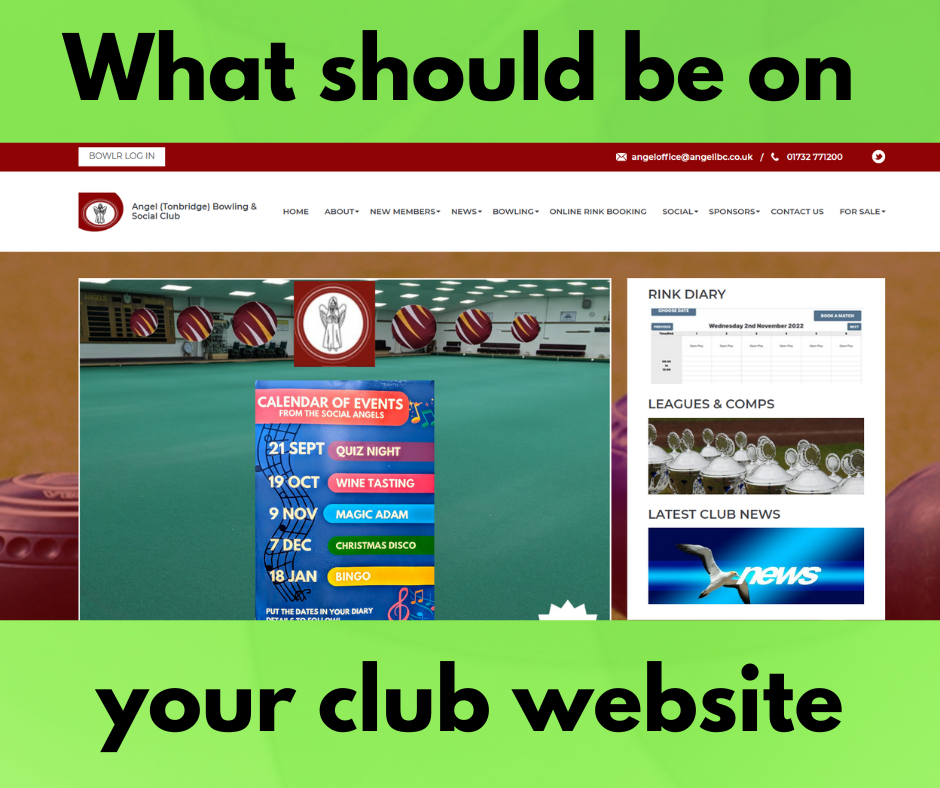Table of Contents
Some links on posts are affiliate links and will earn us a commission from qualifying purchases
In today’s digital world, a website is a must-have for any bowls club. It’s the first place potential members will go to learn about your club, and it’s an essential tool for keeping current members informed and engaged. A well-designed website can be a powerful resource, acting as both a virtual clubhouse and a recruitment aid. Here’s how to create and maintain an effective and engaging bowls club website.
Why Your Website Matters
A good website serves multiple purposes:
- Attracting New Members: It’s your club’s online shop window, showcasing what makes your club unique and welcoming.
- Informing Current Members: It provides a hub for news, events, and updates, making it easy for members to stay connected.
- Promoting the Sport: A website can help raise awareness of bowls as a fun, inclusive, and rewarding activity.
- Building Credibility: A professional-looking website reflects a well-run, forward-thinking club.
With so much depending on your website, it’s important to plan and design it thoughtfully.
1. Plan What to Include
Start by deciding what content will be most useful and appealing. Key sections might include:
- Home Page: A welcoming introduction with your club’s name, logo, and a clear call to action (e.g., “Join Today” or “Learn More”).
- About Us: A brief history of the club, its mission, and what makes it special.
- Membership: Information on how to join, membership fees, and the benefits of being part of your club.
- News and Events: Updates on tournaments, leagues, and social activities.
- Fixtures and Results: A calendar of matches and recent results to keep members engaged.
- Facilities: Details about your clubhouse, greens, bar, and any additional amenities.
- Contact Us: An easy way for visitors to get in touch, with email addresses, phone numbers, and a contact form.
- Gallery: Photos of members, events, and the club in action to showcase its vibrancy.
- FAQs: Answers to common questions from prospective members, such as “Do I need my own equipment?” or “Is bowls suitable for beginners?”
2. Think About Structure
An intuitive structure ensures visitors can find what they’re looking for quickly and easily.
- Navigation: Use a clear and simple menu with logical categories. Avoid overwhelming users with too many options.
- Home Page Focus: Highlight the most important content on the home page, such as joining information or upcoming events.
- Mobile-Friendly Design: Many users will access your website on their phones, so ensure it looks good and functions well on smaller screens.
3. The Power of Images
Images are crucial for creating an engaging and attractive website.
- Action Shots: Photos of members playing bowls, enjoying events, or celebrating wins bring your club to life.
- Facilities: High-quality images of your clubhouse and greens can help potential members picture themselves at your club.
- Inclusive Representation: Include photos that showcase the diversity of your members to emphasize your club’s welcoming atmosphere.
- Videos: Short clips of matches, tutorials, or member testimonials can be even more engaging than photos.
Ensure all images are clear, well-lit, and properly sized to avoid slowing down the website.
4. Keeping It Up to Date
A website is only effective if it’s current and accurate.
- Regular Updates: Post news, results, and event details promptly. Stale content can give the impression of an inactive club.
- Seasonal Refreshes: Update images and content to reflect the time of year, such as summer tournaments or winter socials.
- Member Contributions: Encourage members to submit news, photos, or blogs to keep the site fresh and engaging.
- Technical Maintenance: Regularly check that all links, forms, and features are working correctly.
5. Enhancing Engagement and Recruitment
To maximize the impact of your website:
- Call to Action: Use buttons and banners to guide visitors to sign up, visit your club, or contact you for more information.
- Testimonials: Feature quotes or stories from current members about why they love the club.
- Social Media Links: Include icons that direct visitors to your club’s social media pages for additional updates and interaction.
- SEO Optimization: Use relevant keywords (e.g., “bowls club near me”) to improve your website’s visibility on search engines.
Conclusion
Your bowls club website is more than just a digital presence—it’s a gateway to your club’s community and culture. By planning its content carefully, structuring it intuitively, incorporating high-quality visuals, and keeping it up to date, you can create a website that serves your members and attracts new ones. With consistent effort and creativity, your website can become one of your club’s greatest assets.

